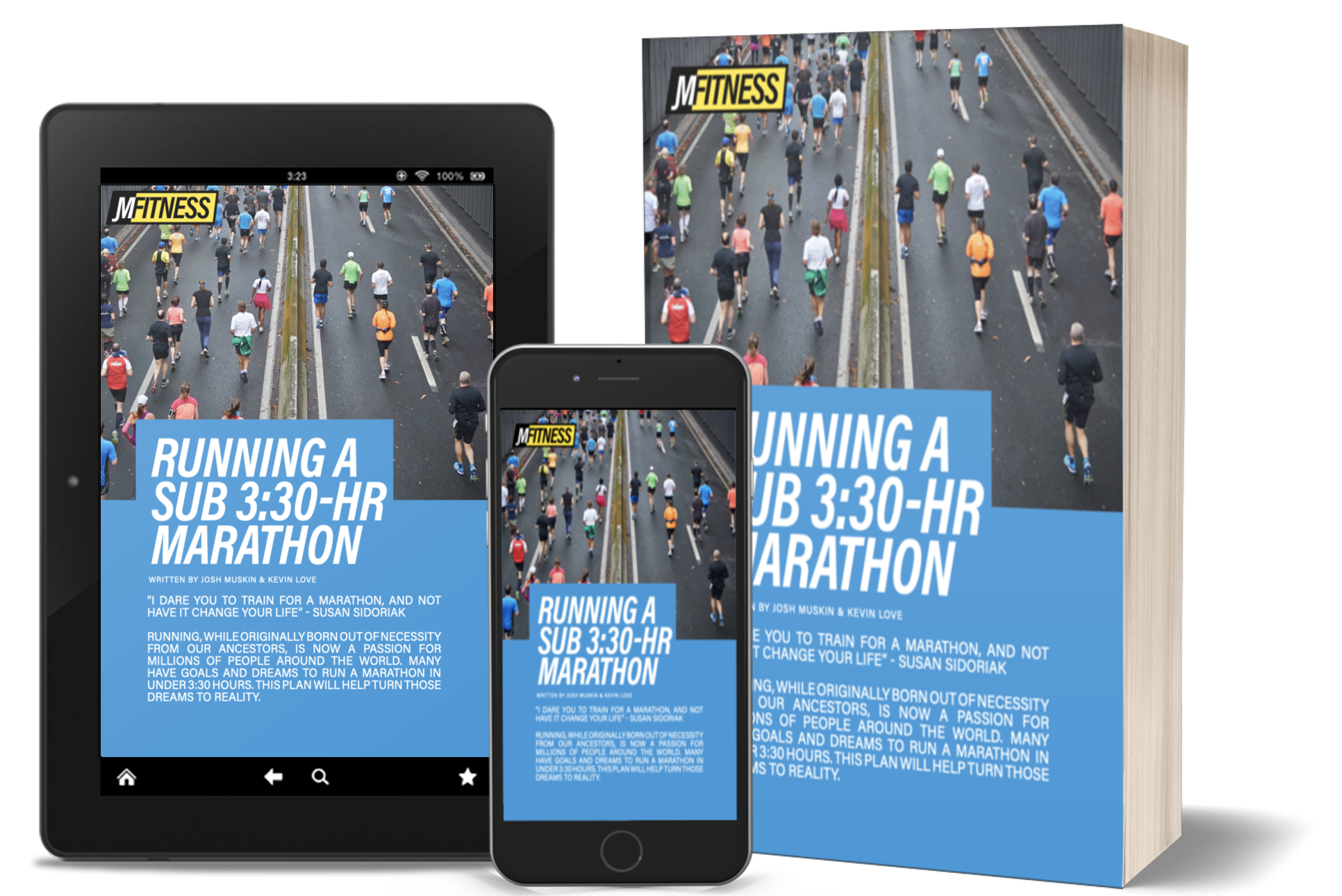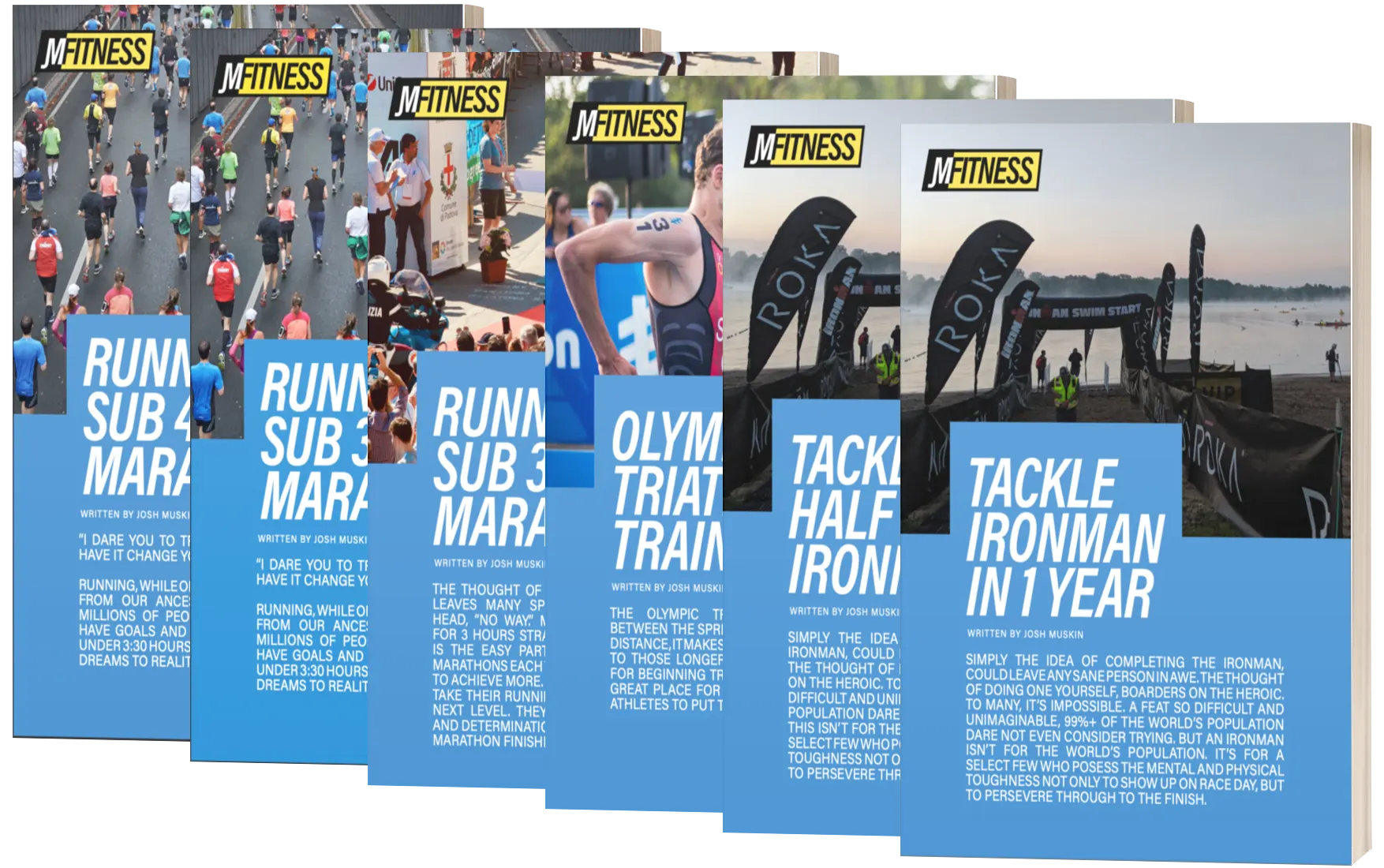Let’s talk a little bit about what a sub 3:30 marathon training plan looks like, who it’s for, and how to get started.
The one thing to state here before getting too deep into it is, if you’re looking to break 3:30 in a marathon, you’ll need to do quite a bit of running.
In addition to running though, there’s a lot to pay attention to – such as your base fitness, diet, injury prevention and a lot more.
Let’s be clear – this sub 3:30 marathon training plan is not of the “couch to marathon” variety. You’ll want to have some running experience, and a solid base level of fitness, more on that… well, right now.
Note: looking for a different time goal? Check out all of the marathon training plans available and find the one best suited for you.
To run a marathon in 3.5 hours, you need to maintain an 8:00 pace for 26.2 miles.
This also means you should be able to run faster than that pace for shorter distances. Consider these as guidelines:
This is some body text.
This training plan is also 16-18 weeks long, so it’s important to be able to run 20-30 miles per week out of the gate, broken up over 4-6 runs.
Any marathon training plan, but particularly one pushing for a time goal, should follow the wave method.
The wave method is essentially routine increases in volume for 1-3 weeks, followed by a 1 week ‘taper’ or lighter week.
This helps your body build new fitness with volume increases, but also allows your body to rest, recover and absorb that new fitness with a lesser risk of injury.
Repeating this method for the entirety of the plan will help you feel fresh & ready to roll on race day, giving you the best possible chance of nailing that sub 3:30 time.
Whew, ok, now that you know what types of runs you’ll be doing, let’s talk a little bit about when you’ll be doing them.
Your sub 3:30 marathon training plan is measured in weeks, and each of those weeks will follow a pattern like the below:
There are a few goals in a schedule like this:
You’re going to burn A LOT of calories – which directly translates into, you’ll need to eat a lot of food.
What kind of food you ask? Well, a general rule of thumb is to eat meat & vegetables, nuts & seeds, some fruit, little starch, and no as little sugar as possible.
You’re looking to find quality, whole foods to eat – doing your best to avoid overly processed foods (which yes, also include those super tasty double chocolate ‘meal replacement’ bars).
Overly processed foods may taste good, but they’re actually counter productive. They can make you feel more sluggish, and even slow you down on some of those longer runs.
The question of ‘how much food do you eat’ is unique to every person.
A good way to get a sense of your personal caloric intake requirements is to use a free app like MyFitnessPal to track your calories & note how you feel. Better yet, if you own a Garmin, you can sync the two apps together & it’ll tell you how much you have burned vs how much you’ve eaten, and you can adjust accordingly.
Alright – you’re now up to speed diet, types of training runs, workout schedule, etc.
Now let’s talk about the various different training phases in a sub 3:30 marathon training plan:
Building an endurance baseline
Steadily increase training volume & distance
Safely hit maximum mileage ahead of race day
Rest and recover the body while maintaining fitness for race day
Each phase will follow the weekly schedule outlined above, but the intensity, length and type of workouts will vary from phase to phase.
This is one of the least exciting phases, but also one of the most important.
The purpose of base phase is to – well – build a base level of fitness where you can begin stacking more difficult and longer runs with a reduced risk of injury.
In this phase, there are a lot of runs at consistent distances and times, with the workout runs being shorter than you may expect.
You might be tempted to push harder or go longer in this phase because you feel like you’re not doing enough – but resist this urge, those hard/longer runs are coming.
This is where you start building layers of fitness on top of the base.
In build phase, the runs (even the recovery ones) get progressively longer, and you’ll be asked to push the tempo/race pace runs for more and more minutes & miles.
This is where you’ll really appreciate the wave approach and even look forward to the taper weeks. That said, you’ll also see some of the best fitness gains in this phase, building up the resilience and confidence you need to attack the toughest phase of them all, Peak.
This is where the long runs get real.
You’ll be pushed to 20 miles, maybe even multiple times, at the peak of this phase (no pun intended).
Many of your weekday runs (tempos, intervals, recovery) will stay similar to build phase, but it will be those long Sunday runs that slowly start to creep up in distance until you’re running 4/5ths of the total race distance at only slightly slower than race pace.
This part is tough – and it’s imperative to listen to your body and take it easy during the week if needed to make sure you hit those long runs.
Almost there!
The taper sounds great – reduced volume, tapering down until race day so your body can be as fresh as possible at the start line.
The problem with taper is more psychological than it is physical.
The issue comes with the attitude that you’ve been training super hard and long for weeks leading up to this, so a dramatic cut in volume feels.. well, it feels wrong.
You’re flooded with thoughts of “I’m not doing enough, I have to go harder” – it’s super important to know this isn’t true at this stage.
Your work is done, taper is designed to recover your body – the fitness is built, now you just need to get to the start line healthy & ready to rock.
This 28 page ebook (PDF) includes nutrition guidance, injury prevention tips, a detailed breakdown of how to break 3:30, & more!
See What's Inside
Check out our library of triathlon and running training plans. From a half marathon to a full Ironman® triathlon, we have you covered.
Choose plan


”


Get exclusive training secrets and productivity tips in your inbox to level up your life.